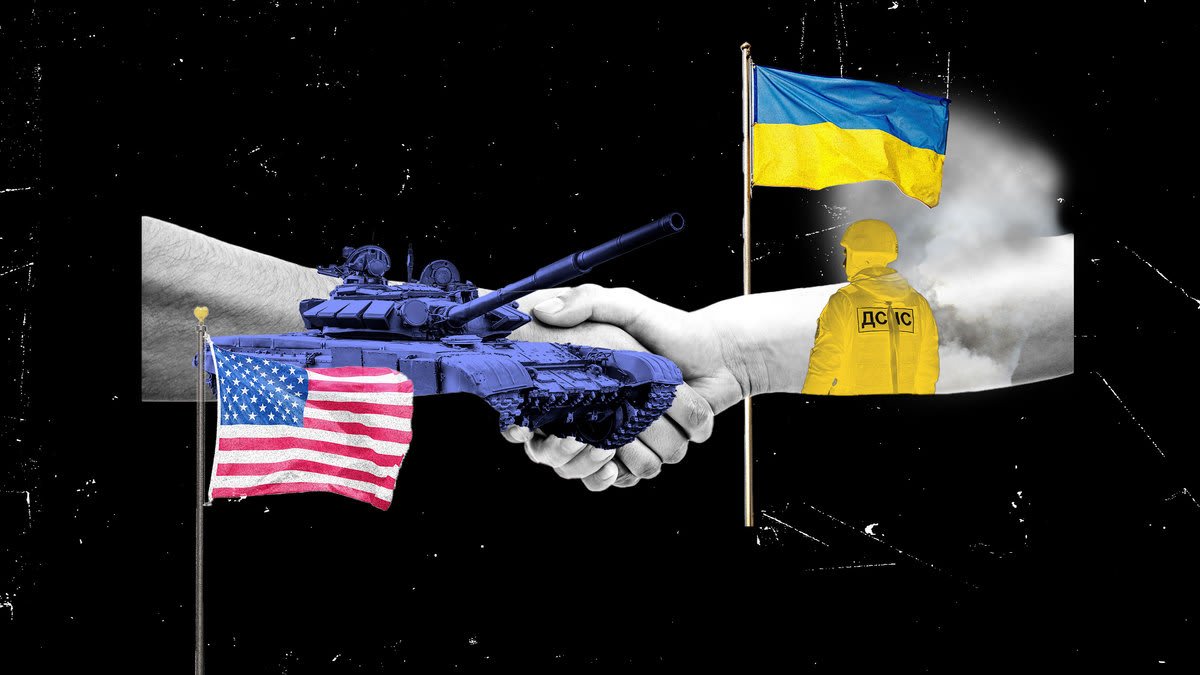Arming Ukraine Is the Path to Peace

As the United States and other NATO countries send Ukraine weapons to fight Russian invaders, some left-wing critics have denounced the effort as warmongering escalation.
For example, linguist professor and activist Noam Chomsky described American policy as “praising ourselves for heroism” while “fighting Russia to the last Ukrainian.” I fault no one for lamenting the destruction and hoping for peace, but that assessment misunderstands this war and America’s role in it.
The decision of when to stop fighting for Ukraine is up to Ukrainians. Helping them, while balancing other risks, is the best path to peace.
Chomsky, however, argued that America should push Ukraine to accept Russian demands: “You can sympathize with [Ukrainian President Zelensky’s] positions. But you can also pay attention to the reality of the world.” That reality, he says, is “neutralization of Ukraine, some kind of accommodation for the Donbas region,” and taking the status of Crimea off the negotiating table. He compares Russia to a hurricane, and argues that concessions are the “alternative to the destruction of Ukraine and nuclear war.”
The linguistics professor and longtime antiwar activist drew criticism for denying both Ukrainian and Russian agency, and for sounding like a Putin apologist, but he also has his defenders. Here’s how Ben Burgis explained it in a Daily Beast column last week:
“Chomsky’s analysis is that the options are, on the one hand, a serious push for Russia, Ukraine, the U.S., and other powers to sit down and hammer out a negotiated settlement to end the fighting or, on the other, continued escalation in which, at best, countless additional Ukrainian lives will be lost. At worst, the regional war could escalate into a broader conflict that could lead to World War III.”
That’s a false choice. The options are not serious diplomacy that ends the fighting or military escalation. Ukraine is the primary actor here, and its choice is acquiescing to Russian domination—with cities surrendering, the Zelensky government abdicating, and a pro-Russia leader installed (as Russia’s original push for Kyiv attempted)—or resisting. Ukraine’s elected leaders, and a large percentage of its population, chose to fight back.
At that point, it’s not diplomacy or war. It’s and.
War, explains political scientist James Fearon, is a bargaining process. Two sides have incompatible demands, so they can’t make a deal, but they don’t really know what they can force the other to accept. The fighting thus reveals information, showing what the militaries can accomplish (or not), and this keeps going until at least one side changes its demands enough to make a settlement possible.
Ukrainian and Russian delegations met days after the invasion started, but didn’t reach an agreement. As recently as April 19, Russia rejected ceasefire proposals from both Ukraine and the United Nations to allow civilian evacuations. The main reason the war hasn’t ended is not the United States trying to “fight to the last Ukrainian,” it’s Russia demanding a lot more than Ukraine is willing to give.
In a broader sense, America arguably bears some responsibility by welcoming former Soviet republics—such as Poland and Estonia—into NATO after the Cold War, and keeping open the possibility of Ukrainian membership. It’s reasonable to argue that NATO expansion made Russia perceive a geopolitical challenge it needed to counter. But it’s also plausible that post-Soviet Russia would have wanted to reassert itself in its near abroad regardless. As International Relations professor Daniel Nexon argues, there are many factors involved, and many possible alternative histories. We don’t know, we can’t know, and while some hypotheticals may seem more plausible than others, we can’t change the past.
Regardless, massacring Ukrainian civilians is not a reasonable response to geopolitical concerns about NATO expansion.
“
The Ukraine war will end with a negotiated settlement, as most wars do, but the details will be shaped by military results that remain uncertain.
”
Attributing the current violence to American ambition and willingness to sacrifice Ukrainians requires the assumption of a lot of unknown outcomes. It requires assuming as certain that—as Russian forces in January massed at Ukraine’s borders—had the U.S. only said, “Ukraine will never be in NATO, and everyone should consider it within Russia’s sphere of influence,” that would have satisfied the Kremlin.
Considering Russia’s maximalist demands, and how little Putin and his spokespeople mention NATO in public justifications—focusing instead on claims that Ukraine isn’t a real country, and oft-shifting lies about a genocide against Russian-speaking Ukrainians, hidden WMD programs, and a government with a Jewish president secretly run by Nazis—that’s not especially plausible.
The U.S. is a significant player in this situation, but not the main character. Russia chose to demand Ukrainian government abdication and national demilitarization at gunpoint. Ukraine, which has been fighting Russia-backed separatists in the Donbas region for eight years, chose independence over abdication. Russia then chose to launch a full-scale invasion. Acknowledging Russian and Ukrainian agency means accepting that the U.S. is not the primary cause of this war, and probably could not have stopped it.
The Ukraine war will end with a negotiated settlement, as most wars do, but the details will be shaped by military results that remain uncertain. Ukraine has already achieved greater success than many expected, thwarting Russia’s attempt to capture Kyiv and other major cities. Far from a futile resistance down to the last, Ukraine’s war effort, aided by Western weapons, has secured its independence.
What Chomsky calls the “reality of the world” is not a fait accompli. Russia is not an unthinking force of nature, like a hurricane, but a state with finite resources, led by human beings with finite will. They’ve already been forced to scrap regime change and pursue the less ambitious goal of controlling Donbas and southern Ukraine.
Ukraine is fighting back, and if they win the battle of Donbas (like they won the battle of Kyiv), they can improve their negotiating position, and maybe even last long enough to exhaust the Russian offensives. Maybe they can get something like the pre-invasion status quo, or better.
Or maybe not. But since the Ukrainians want to try, it’s not surprising they’d be insulted by outsiders’ willingness to trade away Ukraine’s territory and ability to choose its own international relationships, not least because they worry abdication now could mean Russia pockets the gains, reconstitutes forces, and returns in a few years to finish the job. Having seen Russian forces rape, torture, steal, and kill throughout their country, few Ukrainians, from Zelensky on down, appear interested in giving Russia things they don’t have to, even as they surely realize continued fighting means more death.
That means America’s choice is not between diplomacy and war, but between honoring Ukraine’s request for help and telling them they’re on their own.
With NATO openly aiding Ukraine’s war effort, there are serious risks of escalation that could spin out of control and lead to a nuclear exchange. But Biden administration policy shows a healthy appreciation of that risk. The president has not, and insists he will not, send in American troops, rejected calls for a no fly zone, blocked a transfer of fighter jets from Poland to Ukraine, and avoided reacting to Russian missile tests and other nuclear provocations. The U.S. is walking a careful line, helping Ukraine as much as possible while minimizing the risk of a wider war.
Whether to settle with Russia, and on what terms, is Ukraine’s decision to make. If they like a deal, the U.S. should support it, even if it means removing economic pressure that Putin critics have advocated for years.
But as long as the Ukrainians choose to fight, the path to peace is Ukrainian military success. That improves Ukraine’s negotiating position, and disincentivizes future international aggression—not just by Russia, but China, too—by showing that the costs outweigh the benefits.
A settlement is possible when Russia accepts Ukraine’s independence, not before.







